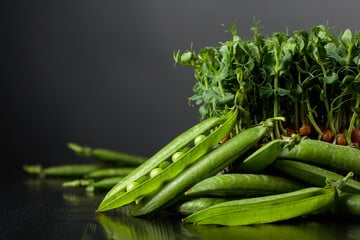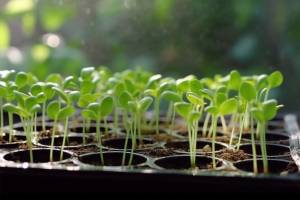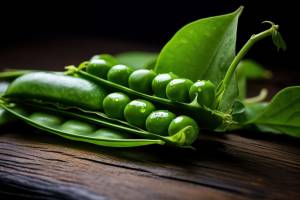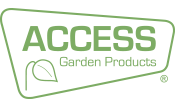Growing Peas in a Greenhouse

Growing your own peas
Home-grown, freshly picked peas are sweet and delicious, better than any you can buy. They’re one of the easier crops to grow, with climbing and dwarf varieties taking up relatively little ground space, and if you sow several batches you can have harvests throughout the summer. Growing Peas in a Greenhouse, or if space in limited a mini greenhouse, is a reliable way of maximising crop yields and producing earlier crops.
To enjoy peas at their sweetest, you have to grow them yourself and eat them freshly picked – even before they reach the kitchen! Luckily, peas are easy to grow, although starting them off indoors or under glass, is considered safest, as the seedlings make tasty snacks for various creatures that reside in your garden!
Varieties of pea plants
There are more varieties of peas than you might expect – there are garden peas, mangetouts and sugarsnaps; green, yellow or purple pods; tall, medium or dwarf plants, early varieties and maincrops. So take your pick – or, grow several?
Varieties of peas for shelling produce either smooth or wrinkled peas. Smooth varieties are hardier, so are better for early sowings. Wrinkled varieties are for late spring or summer sowing, and have a sweeter flavour.
Varieties are classed as earlies or maincrops, taking longer to crop and growing taller:
- First earlies – sow March to early June, start harvesting in about 12 weeks
- Second earlies – sow March to June, start harvesting in 13–14 weeks
- Maincrops – sow March to June, start harvesting in 14–16 weeks
Some varieties produce particularly long pods, containing up to 10 peas, others a bigger overall crop. Varieties can also vary in height from just 45cm (18in) right up to 1.8m (6ft).
Mangetout and sugarsnap varieties, which are picked before the peas mature, are the easiest to grow and tend to produce larger crops. There are several particularly decorative varieties with purple or yellow pods and mauve or blue flowers.
Marrowfat varieties are grown to full maturity and dried, for use in stews and casseroles, or for making mushy peas. Petit pois varieties have very small, sweet, flavoured peas.
Some varieties are even sold purely for pea shoots, rather than pea pods, and can be grown on a sunny windowsill. Pea shoots are often used in salads or stir fries.
Sow small batches every few weeks from early spring, for harvests through summer and into autumn, and pick the pods regularly to encourage more new growth.
You can buy a wide choice of pea varieties as seed from garden centres or online seed suppliers. Many also sell young plants in spring and early summer, ready for immediate planting.
Preparing to plant

Peas like a sunny position and good drainage. They prefer neutral to slightly alkaline soil, so if your soil is acidic, try adding lime.
Weed the ground thoroughly, then fork in lots of well-rotted manure or garden compost. Garden compost is a soil improver made from decomposed kitchen waste (fruit and vegetable peelings and cores, coffee grounds etc), usually in a compost bin or heap. It is added to soil to improve its fertility, structure and water-holding capacity. Seed or potting composts are used for growing seedlings or plants in containers – a wide range of commercially produced peat free composts are available, made from a mix of various ingredients, such as loam, composted bark, coir and sand, although you can mix your own compost, use around two bucketfuls per square metre. Ideally, do this a few weeks before sowing or planting out.
Growing Peas in a Greenhouse or Cold Frame is best early on – February or March allows you to get an early start, particularly if your soil is cold and wet, when seeds may fail to germinate or may rot outdoors. You can also sow in autumn and keep plants indoors over winter, for planting out in early spring. Indoor sowing can protect the seeds from being eaten by mice.
Fill deep modular trays, guttering, small pots or cardboard tubes with multi-purpose compost. Sow up to three seeds per pot, or one per narrow tube or module, inserting them about 5cm (2in) deep. If using guttering you can sow your seeds along the length, and if you decide to transplant the plants to an outside area, this makes it easier as you have ready made rows that can be slid into a trench.
You can plant indoor raised or bought plants outside from March onwards, once they’re about 20cm (8in) tall.
Protecting your pea plants
First, harden off the seedlings to acclimatise them to outdoor conditions. It is best to do this by placing them in a cold frame or under a cloche, or if you are growing peas in a Greenhouse, you can open up the ventilation during the daytime.
Gradually acclimatising tender or indoor-raised plants to outdoor conditions, to toughen them up and prevent a check in growth. Place plants outside in a sheltered spot during the day then bring indoors at night for a couple of weeks. Or place in a coldframe, opening the lid during the day.
Cold frames are glass structures with a hinged or removable, lid. Useful to protect plants from cold weather over winter or harden off young plants in spring and provide extra warmth for tender crops in summer.
A cloche is a small, portable, protective structure made of glass or rigid transparent plastic used to protect plants, especially overwintered and early vegetables, from wet and cold weather. They are also useful to warm the soil before planting. Alternatively, take them outdoors during the day, then bring in at night for a week, and then gradually increase the outdoor time.
Plant into prepared ground , about 7.5cm (3in) apart, taking care not to harm the roots. Firm in gently and water well. Arrange in rows as described in sowing outdoors, above – planting shorter varieties in a triple row, and taller varieties in either a single row or a double row with enough space in between them for supports.
If the plants were grown in a length of guttering, simply dig out a shallow trench of similar dimensions to the guttering, then gently slide the compost and plants into it, with minimum disturbance to the roots. Firm in gently, then water well.
Harvesting your peas

By choosing different varieties of pea plants, you can harvest from June through to October, and by starting off growing peas in a greenhouse you will maximise your crops. Pick regularly, which will encourage plants to produce more shoots. Pea plants will stop producing when they are well filled. Mangetout and sugarsnap peas should be picked when the pods are about 7.5cm (3in) long, just as the peas are starting to develop. Plants will crop for several weeks. Pea pods develop lower down on the plants first, so work your way up when picking.
Pea shoots can be harvested from the tips of young plants. They taste like fresh peas and are a great addition to salads or stir-fries. But don’t take many from each plant, as it can hinder cropping. Alternatively, you can grow plants specifically for their shoots, harvesting within a few weeks of sowing, when tender and delicious.
Finally, enjoy!
